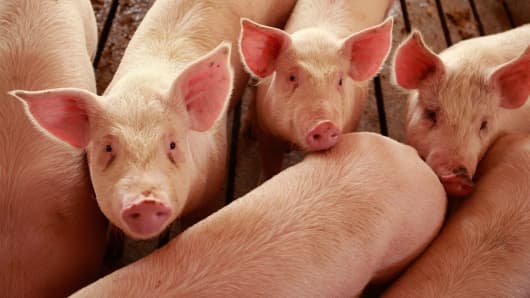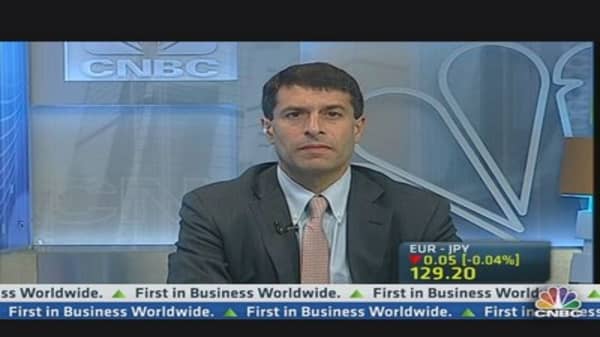The rapid rise in pork prices is developing as the main threat to currently subdued inflation in China, according to analysts at Bank of America Merrill Lynch.
The price of pork, viewed as an essential part of the Chinese diet, has risen in recent weeks on higher seasonal demand. Tight supply meanwhile has been exacerbated by unusually hot weather conditions, which hinder transportation of pigs over long distances.
(Read more: Shanghai suffers hottest July in more than 100 years)
Bank of America Merrill Lynch (BofAML) said that pork prices are up 13 percent from where they bottomed in mid-May, and, according to Chinese media quoting the Ministry of Commerce, prices rose 10 percent between the fourth week of May and the fourth week of July.
"The CPI [consumer price index] inflation trend deserves a careful examination, and within that, pork prices are among the most important to watch for," analysts at BofAML said in a note released Tuesday.
"Recall that almost every episode of China's inflation spikes in the past few years was driven by food prices – case in point, the escalating pork prices in 2007-08 and 2011, and rising vegetable prices in late-2010."





